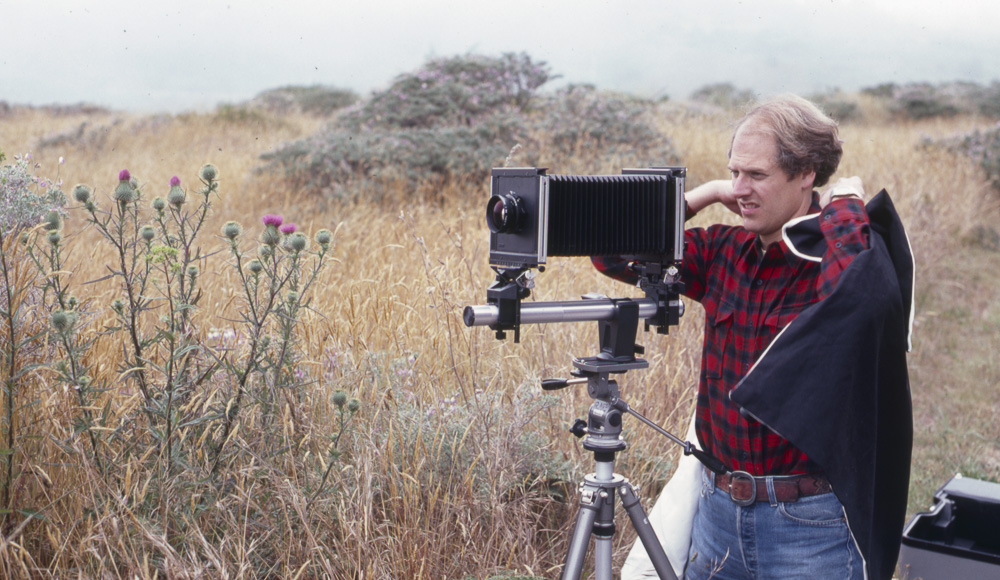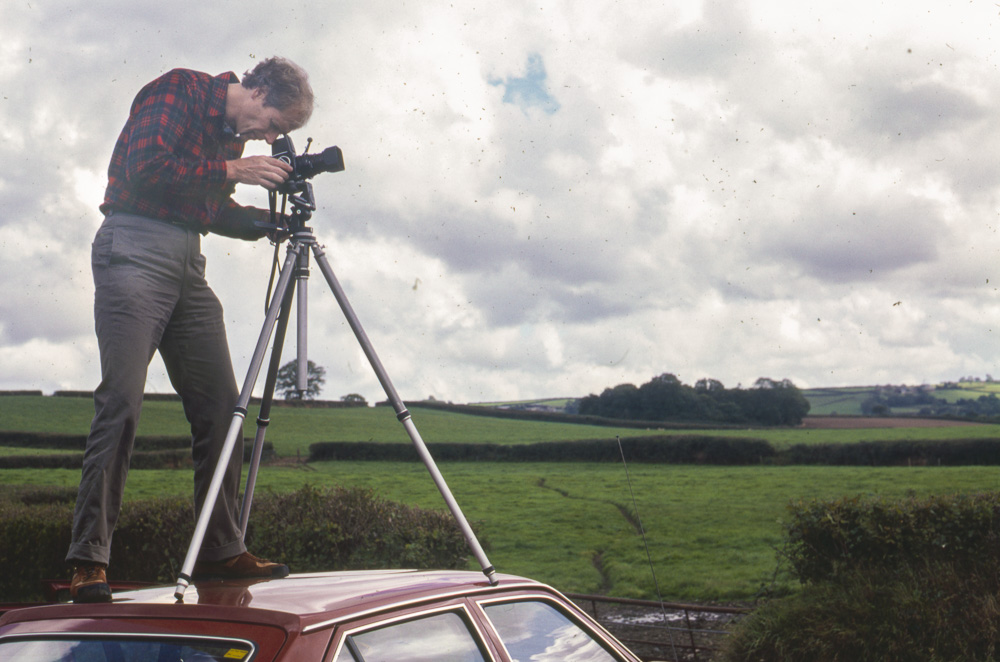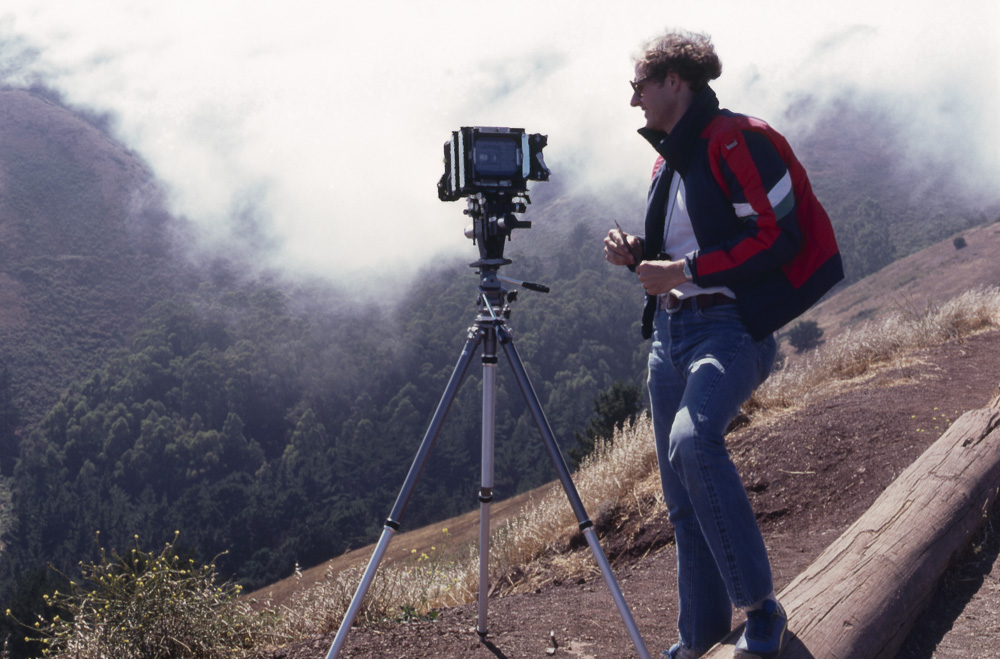In this post a couple of days ago, I talked about the shorter-than-I-had-first-thought useful lifetime of lenses, specifically excluding lenses with adorable flaws – deviations from conventional perfection that make the lens and the way it renders a scene an integral part of the image creation process, as opposed to just getting out of the way. In hi-fi terms, a beautifully flawed lens would be comparable to, say, a single ended Class A triode amplifier, and a lens that got out of the way to the proverbial “straight wire with gain.”
One of the points that I made was that sensors are getting smaller, and that the older, larger coverage, lenses have limited utility today. This is not just associated with digital photography. As finer-grain emulsions emerged all through the 20th century, photographers scaled down the size of their negatives (and even ‘chromes) as the smaller formats – many still huge by today’s standards – came to deliver quality previously only available with really big pieces of film.
Over on dpr, one forum contributor took me to task for the way that I made comparisons of lenses for different sensor (in this case, please consider film to be a kind of sensor) sizes, saying:
…I think variance in formats is confounding the discussion here – you have to do the analysis inside a particular format. You simply changed the format you were shooting.
I don’t think that format size should be held constant in doing the kind of decade-spanning comparisons that I did with my lens longevity post. Rather, what should remain similar is image quality, as defined by resolution, correction, aberration, noise, and the like. Admittedly, that’s a difficult thing to measure. Thankfully, to make the kind of hand-waving arguments in the earlier post, we don’t have to be precise; it’s more like horseshoes than basketball.

12×20 inch banquet cameras used to be the tool of choice for a class of working pros. Now they are oddities used by artists like Michael Smith (In truth, Michael’s a piker by banquet camera standards; he uses an 8×20 camera). That’s partially because today’s photographers doing the same kind of work can get sufficient quality with smaller, cheaper, easier to deal with cameras (it’s also partially because that kind of photograph has gone out of fashion, but that’s another story). So photographers doing work similar to that done by people with 12×20 cameras in days of yore don’t need the lenses that they used with those cameras any more, no matter how good they were for their intended purpose – and, by today’s standards, those uncoated lenses weren’t very good.
When Canon introduced their first 16 MP full frame camera, the 1DsMkII in 2004, a bunch of pros stopped using film and digital medium format cameras and started using the new Canon for the same kinds of product and fashion shots. They did that because they didn’t give up any image quality over their old, big, klunky, expensive, slow-focusing MF gear, or at least not enough to matter, and the advantages of the Canon were striking, especially considering its immense lens line-up. The format wasn’t what drove the switch; quality did. Same quality, smaller format, and their old MF lenses were put out to pasture.

I used to use 4×5 camera in the field, and up to 8×10 ones in the studio. When I started using the BetterLight Super 6K in a 4×5 camera, I found that I could essentially achieve 8×10 quality with a much smaller camera. If I’d have sprung for the 10K version, it would have been non contest, with the winner being the scanning back. Of course, I needed subjects that didn’t move and lights that didn’t flicker. As an aside, there’s nothing like holding a 8×10 ‘chrome in your hands, but that’s another story. Since I only used the 8×10 in the studio, the BetterLight back made my 8×10 lenses superfluous. They were still good lenses; but I had no use for them.
In the field, I can get 8×10 quality for cooperative subject matter (and I am continually surprised at how many landscape subjects work great) by stitching with a Sony a7ii or a7RII. I can actually get better than 8×10 quality that way; so much so that I regularly res down the Sony images before stitching. You can have too much of a good thing if your intended print size is less than immense. That means, if I’d have used the 8z10 in the field, I wouldn’t need it – or its lenses – anymore. Same or better quality, no tripod most of the time, a fraction of the weight, better lens selection, what’s not to like?
In the case of 4×5 film cameras, I can get similar quality with either the Hasselblad H2D-39, the D810, or the a7RII, all of which are smaller, and two of which are lighter than a 4×5 configured for similar subjects. I get a better native lens selection in the case of the Sony and especially the Nikon, and autofocus, auto exposure, image review without resorting to Polaroid backs, ability to shoot handheld, and a host of other advantages. . If I weren’t still doing the occasional scanned capture with the Super 6K, I’d have no use for my 4×5 lenses.

A camera is a tool in service of the photographer, chosen for its applicability to the project at hand. One of the aspects of defining a project is specifying the necessary image quality. Not all projects require the highest possible quality; in fact, few projects do. The size of camera and lens required to achieve a given level of image quality has been getting smaller since the days of Matthew Brady and Carleton Watkins. The transition to digital has accelerated that trend. That means that many old lenses are now of little interest, with many of the remaining ones appealing because of adorable flaws and/or low price. There are exceptions, of course: some Leica R glass, for example, but the best of that seems to be the later versions.
I spent most of my professional life looking at an upside down world on the screen of a 5×4 Sinar, a 7×5 Cambo or similar, and when I retired I bought a 35 pc nikkor and a PB4 bellows to play with and if you used really slow film its amazing what you could get on film even.
Now with a lowly a7 and Lightroom I can do that sort of thing with all focal lengths, and stitch away to the limit of the PCs memory ( I must buy some more)☺ And get phenomenal resolution.
Largest camera I ever used was a 20×16 HP Littlejohn, but not ‘ in the field’, it was a process camera and ran on 25 ft of 2ft guage track
Gerry
Hi there!
I have just bought a nearly mint Hasselblad H2D39 and I must say that this, with Zeiss lenses and the CF Adapter, has a much higher quality than my Nikon D810 or Sony A7R(at iso 100 and 200). It is no contest and I often print at sizes of 50×60 inches. It is an amazing device even after 10 years after its introduction.
If you are careful about making demands on the dynamic range, the H2D-39 can do amazing work. However, I’ve never gotten the quality out of it that I can get with an a7RII and an Otus. I’m assuming you’re using it at ISO 50.